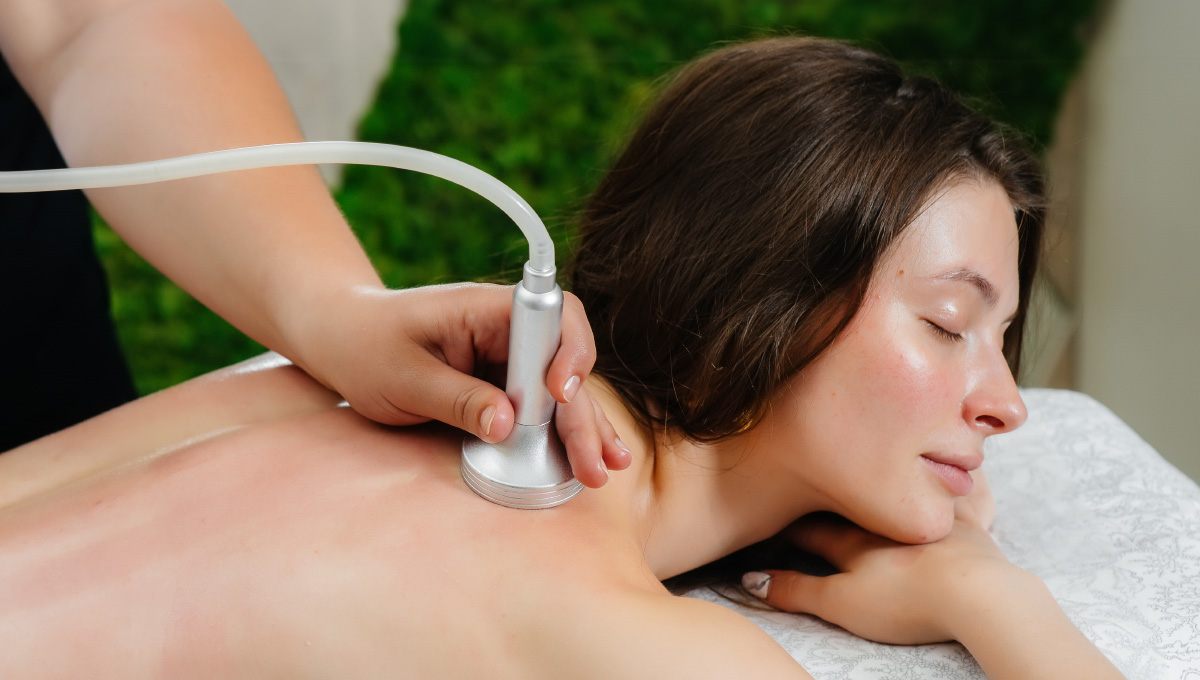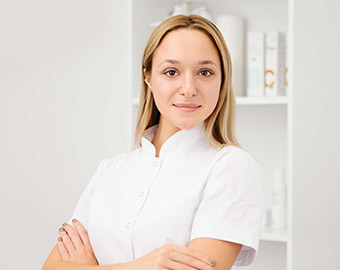
Did you know cups can help you improve the shape of your body, lower your blood pressure, and reduce body pain? You heard it right! Enter Cupping Therapy.
According to some research, cupping therapy may be beneficial for specific medical disorders. Traditional Chinese and Middle Eastern practices like cupping therapy are used to treat a range of ailments.
It includes placing cups strategically on your skin. The cups pull against the skin when a practitioner creates suction in them. Both moist and dry cupping are possible. Therapists with a medical license perform wet cupping. They puncture the skin just before beginning the suction, drawing a portion of your blood. After being exposed to the vacuum effects of cupping, your skin usually develops circular bruises as blood vessels burst. Read on to find out how to do cupping at home.
Cupping Massage Guide: Choosing your Cupping Set
When considering how to do at home cupping therapy, choosing the best cupping equipment requires considering the many types of cups, such as silicone, plastic, and glass. Because glass cups are sturdy, they offer stability throughout treatment. On the other hand, plastic cups are lightweight and manageable. The elasticity of silicone cups allows them to conform to the curves of your body.
Mychway’s at home cupping equipment is a worthwhile device because it provides a practical and efficient cupping experience. The gadget speeds up metabolism, increases blood flow, and stimulates acupuncture sites via microcurrents, allowing cupping to be performed at home easily.
When selecting a cupping kit, examine your skin sensitivities and personal preferences. If you value durability above all else, glass cups could be better, but silicone and plastic cups have their own benefits.
For a hygienic experience, use cups that are simple to keep, as cleaning is quite essential. Additionally, choose a kit that comes in an array of cup sizes for accommodating diverse body parts.
Preparing for Cupping
Before cupping, ensure that everything is organized and safe. To keep yourself hygienic, wash your hands properly. Ensure that you wash the area of the skin where the cups will be positioned to prevent infections. Choose a peaceful and cozy area to relax during the cupping procedure.
Before using, check the cups for any scratches or cracks. Make sure the cupping kit is dust- and debris-free and sanitized. For safety, always have a fire extinguisher close by if you plan to use fire-based cupping.
To avoid discomfort when cupping, warm up the space. Assemble all required materials, such as the timer, lubrication for smooth operation, and cups.
Before you begin, discuss any health issues or concerns with your physician. In order to enhance the advantages of cupping, unwind and take deep breaths throughout the session. By performing these simple procedures, you establish a safe and hygienic setting for a practical cupping session.
Right Way to Do Cupping Therapy at Home
Step1: Use oil on your skin to suction it so the cups can slide over it. This is an essential step since it facilitates the creation of the vacuum needed for the cups to function correctly.
Apply oil that is suitable for your skin type on the area you want to treat.
Step 2: Acquaint yourself with the various pressure levels as well as the cups. Start with a mild suction and observe your skin’s reaction.
Low suction will cause the skin tissue to rise less, but as the pressure level increases, the skin will rise higher. Try out various suction levels to determine which suits you the best.
Step 3: Begin rearranging the cups as soon as you have a sense of the pressure. To steer the cup in the desired direction, utilize your hands.
When cupping your back, for instance, move the cup across the paraspinal muscles that are next to the spine using your hands.
Step 4: Avoid exerting pressure or pressing the cups. Since cupping is a delicate therapy, excessive pressure might be uncomfortable.
Loosen the cup and change the amount of pressure if you experience any redness or pain.
Step 5: Squeeze and remove the cup upwards and away to remove the suction. This is a crucial step since releasing the suction too soon can hurt.
Step 6: For better detoxification, stroke in the direction of your heart if you’re mixing massaging with cupping.
This method facilitates the removal of toxins from your body and improves the performance of your lymphatic system.
Step 7: Lastly, when cupping, remember to avoid the neck and any nearby lymph nodes. This is a delicate topic. It’s recommended to stay away from cupping this area unless you’re an expert.
Benefits of Cupping Therapy
By using a professional vacuum cupping device, you can look into cupping for aesthetic purposes, such as breast enhancement or butt enlargement. Using specially made cups to create suction, cupping draws toxins out of the body’s muscle tissues.
Consequently, cupping reduces pain by enhancing the lymphatic system and blood circulation. In addition to making you feel rejuvenated, cupping offers the following advantages:
-
reduces inflammation
-
enhances blood flow
-
lessens stress or tenseness in the muscles
-
relieves pain
-
increases immunity
Precautions and Side Effects
The NCCIH lists the following possible dangers of cupping:
-
long-lasting skin discoloration
-
burns that leave scars
-
infection
-
Cupping can worsen skin conditions like psoriasis or eczema in the region where you apply the cups.
A review on cupping from 2018 states that the technique may also result in the following:
-
headaches
-
exhaustion
-
lightheadedness
-
dizziness, nausea, and sleeplessness
If you experience these adverse effects after receiving cupping therapy, consult a medical expert. You may also have health concerns, such as difficulties with blood circulation, that make cupping unfit.
Who Should and Shouldn't Use Cupping?
Cupping is beneficial for many, as it relieves tense muscles and encourages relaxation. It is appropriate for anyone looking for a relaxing therapy. However, cupping should be avoided if you have blood abnormalities, active infections, or skin diseases.
Before cupping, if you are pregnant, have a history of seizures, or are taking blood thinners, you should speak with a healthcare provider. Always consult a practitioner to see if cupping therapy is appropriate for any pre-existing medical issues.
Conclusion: Embracing Safe Practices
Traditional Chinese and Middle Eastern practice cupping therapy may provide health advantages, but further research is required to grasp its workings and efficacy fully. Material considerations for cupping kits include silicone, plastic, and glass.
With its customizable settings, Mychway’s cupping gadget may offer a convenient experience. Assuring a clean environment, checking cups, and voicing concerns are all part of preparation. Applying oil, modifying suction levels, shifting cups, and preventing excessive pressure are all part of cupping.
Benefits of cupping include pain reduction, decreased muscle tension, and better circulation. Headaches, scarring, and skin discoloration are possible side effects. While many find it suitable, if you have certain medical conditions, speak with experts before beginning a cupping session.
FAQs
How is the cupping therapy Hijama massage done at home?
To apply Hijama cupping therapy at home, massage the affected area with oil, use cups to generate suction by gently moving the cups. Start with a low suction and build it up gradually. Steer clear of delicate parts, release suction gently, and maintain a clean atmosphere. For a secure and productive at-home routine, consult experts on how to perform at home cupping massage.
How long do you leave a cupping cup on?
There is no set length of time for leaving a cupping cup on. For cupping massage for beginners, begin with five to ten minutes and extend or shorten as needed. If you have experience, you can leave the cups for 15 to 20 minutes. To avoid severe bruising or discomfort, avoid cupping typically in one spot for an extended period. Your comfort should always come first; if in doubt, seek advice from an expert on how to use a vacuum cupping device at home.
How long should you wait between cupping sessions?
Between cupping sessions, give your body a minimum of two to three days to recuperate and avoid any possible bruises or skin irritation. Pay attention to how your body reacts. Before booking your next cupping treatment, seek advice from a healthcare provider or practitioner if you feel any discomfort or aftereffects.
Where in your body should you apply cupping?
You can use body cupping on the back, arms, and legs, among other places. It’s imperative to avoid delicate regions like the neck and exercise caution near joints or bones. Speak with a doctor to ascertain which areas are best for your particular needs.
How long do cupping marks last?
Usually appearing within a few days to weeks, cupping marks result from blood vessels breaking under suction. The length of time varies depending on personal characteristics. These include the degree of skin sensitivity and the extent of cupping. The healing process of cupping therapy may be accelerated by gently massaging the markings or applying arnica cream.


